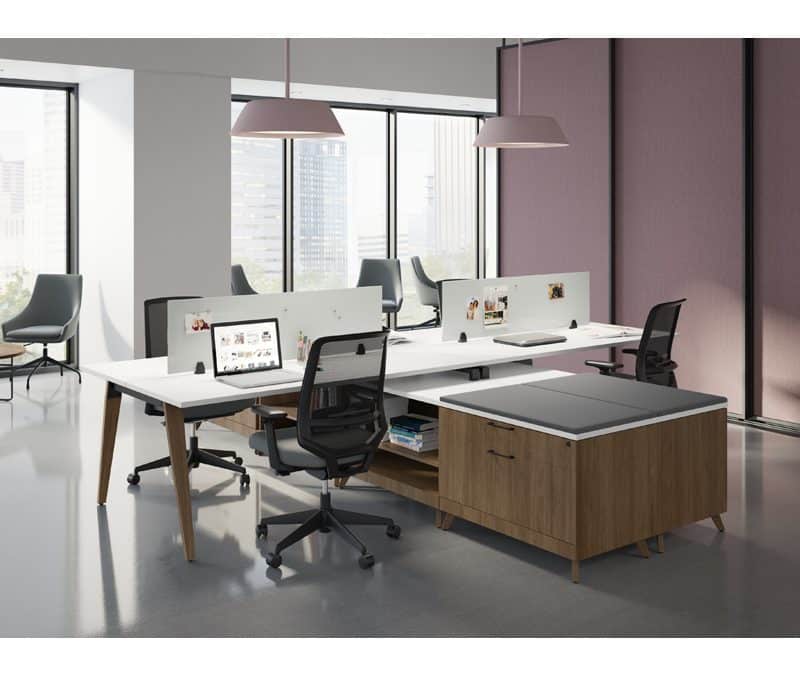When it comes to selecting office furniture, one important consideration is the type of material used for its surface. Laminate and wood veneer are two popular options, each with their own unique characteristics and benefits. In this article, we will explore the differences between laminate and wood veneer to help you make an informed decision when furnishing your office.
Laminate:
Laminate is a synthetic material made by layering multiple sheets of resin-impregnated paper under high pressure. These sheets are then bonded to a substrate, typically particleboard or medium-density fiberboard (MDF). Laminate offers several advantages for office furniture:
- Durability: Laminate is highly durable and resistant to scratches, stains, and impact. It can withstand the rigors of daily office use and maintain its appearance over time.
- Variety: Laminate offers a wide range of colors, patterns, and textures, allowing you to achieve different aesthetic styles for your office furniture. Whether you prefer a sleek modern look or a traditional wood grain appearance, laminate can provide diverse options to suit your taste.
- Easy Maintenance: Cleaning laminate surfaces is relatively simple. They can be wiped clean with a damp cloth and mild detergent, making laminate furniture a practical choice for busy office environments.
- Cost-Effective: Laminate furniture tends to be more budget-friendly compared to wood veneer. It offers a cost-effective solution for furnishing your office without compromising on quality and aesthetics.
Wood Veneer:
Wood veneer is a thin slice of real wood that is applied to a substrate, typically particleboard or MDF, using adhesives. Wood veneer provides a unique blend of natural beauty and practicality for office furniture:
- Natural Appearance: Wood veneer offers the warmth, richness, and authentic feel of real wood. The grain patterns and textures add a touch of elegance and sophistication to your office space, creating a welcoming atmosphere.
- Sustainability: By using wood veneer, you can achieve the look and feel of solid wood furniture while minimizing the use of solid wood resources. Veneer allows for the efficient use of timber, making it an environmentally conscious choice.
- Repairability: In case of minor scratches or damage, wood veneer can often be repaired or refinished. This makes it a desirable option for long-term investments where the furniture may require maintenance and restoration over time.
- Prestige: Wood veneer is often associated with high-quality, luxury furniture. If you want to create an executive or upscale ambiance in your office, wood veneer can contribute to a more prestigious image.
Choosing the Right Material:
The decision between laminate and wood veneer ultimately depends on your specific needs, preferences, and budget:
- Consider the level of durability required in your office environment. If your furniture will be subjected to heavy use, laminate may be the better option due to its superior resistance to wear and tear.
- Evaluate the desired aesthetic and style of your office. If you prefer the natural beauty and warmth of real wood, wood veneer is the ideal choice. However, if you seek versatility and a wide range of design options, laminate offers more variety.
- Assess your budgetary constraints. Laminate is generally more affordable than wood veneer, making it an attractive option for those with limited budgets.
Both laminate and wood veneer have their own merits and can be suitable for office furniture depending on your requirements. Laminate offers durability, affordability, and versatility, while wood veneer provides a natural, elegant, and sustainable option. By considering factors such as budget, desired aesthetics, and durability needs, you can make an informed decision and select the material that best aligns with your office furniture goals.

